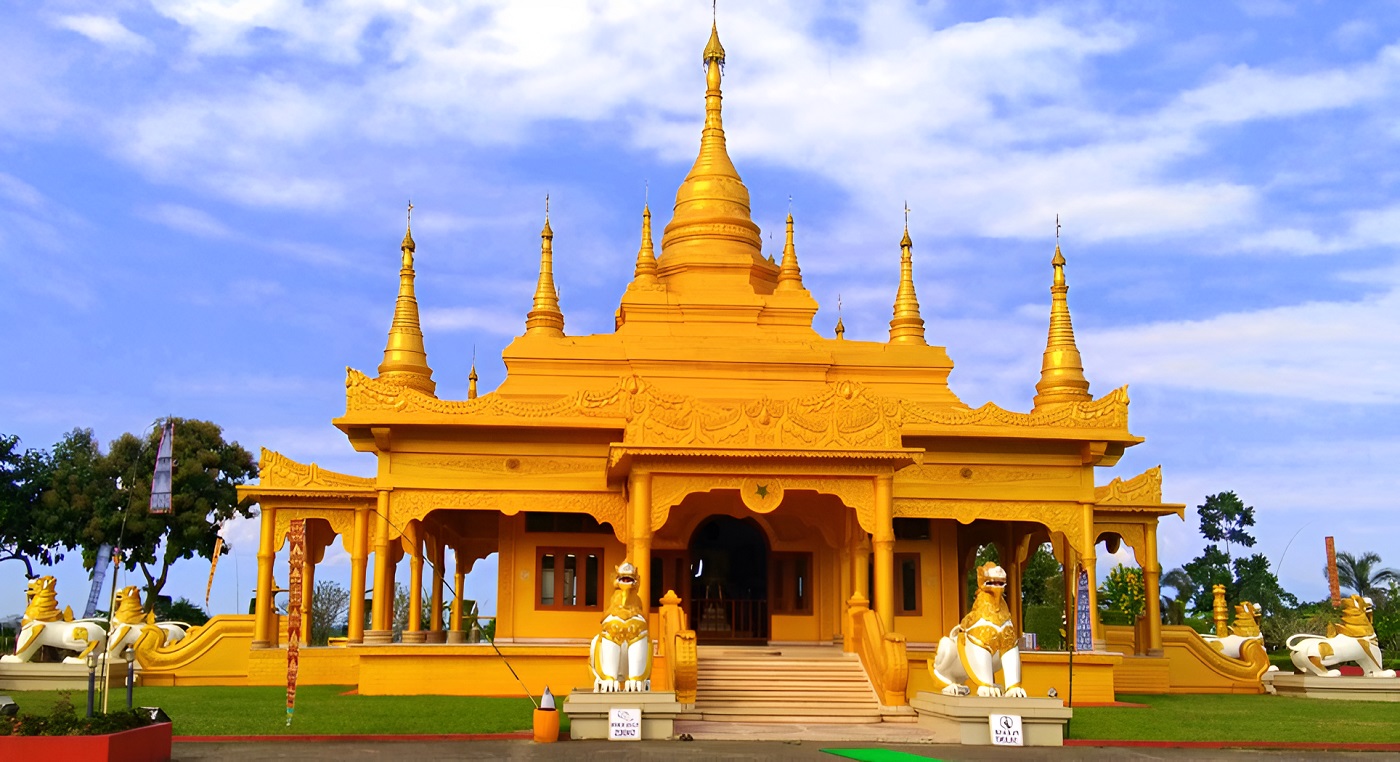Arunachal Pradesh: The Land of Dawn-Lit Mountains
Arunachal Pradesh, nestled in the far eastern corner of India, beckons with its breathtaking landscapes, rich tribal heritage, and captivating biodiversity. Nicknamed the “Land of Dawn-Lit Mountains,” Arunachal Pradesh boasts the easternmost point of India, where the sun first kisses the snow-capped peaks of the Himalayas. This exploration delves into the essence of Arunachal Pradesh, uncovering its mesmerizing beauty, diverse cultures, and the challenges and opportunities that lie ahead.

A Geological Tapestry Etched in Time
The geological history of Arunachal Pradesh dates back millions of years. The Himalayas, which were created when the Eurasian and Indian plates collided, dominate the northern skyline. The state’s spectacular backdrop is created by these powerful mountains that rise from the foothills. Valleys and plateaus, which are traces of the former Gondwana area, are what define the central and eastern regions. The Siang River, a significant Brahmaputra tributary, shapes the state’s riverine environment and serves as a crucial lifeline for both residents and wildlife. The varied geological features of Arunachal Pradesh affect its climate, plant patterns, and the distribution of its abundant mineral riches in addition to adding to the state’s breathtaking scenery.
A Mosaic of Communities: From Ancient Settlements to Tribal Tapestry
Arunachal Pradesh is home to a diverse range of tribal cultures, each distinguished by its own language, traditions, and customs. There is evidence of human occupancy in the area dating back to the second millennium BCE, and the early settlers’ lifestyles are revealed by megaliths and rock paintings.

Different indigenous communities, including as the Monpas, Singphos, and Apatanis, made their homes in different sections of the state over millennia. These communities have a deep connection to nature, reflected in their reverence for forests, mountains, and rivers. Their vibrant festivals, like the Mopin festival of the Adi tribe celebrating agriculture, and the Solung festival of the Dirang Monpa tribe seeking blessings for a prosperous harvest, showcase their rich cultural heritage.
Arunachal Pradesh’s unique culinary culture
The food culture of Arunachal Pradesh is a rich tapestry reflecting its diverse tribal heritage. Staples include rice, maize, and millet, often accompanied by bamboo shoots, fermented soybeans, and leafy greens. Dishes are typically cooked with minimal spices, allowing natural flavors to shine. Popular dishes include “Thukpa,” a hearty noodle soup, and “Pika Pila,” a spicy pickle. Meat, especially pork and fish, features prominently, often smoked or fermented. “Apong,” a traditional rice beer, is a common beverage. Each tribe has its unique culinary traditions, with local ingredients like wild herbs and forest produce playing a significant role in their diet.

A Paradise for Nature Enthusiasts: Unveiling Arunachal Pradesh’s Beauty
Arunachal Pradesh is a haven for nature lovers. The majestic Eastern Himalayas, with peaks like Kangto and Nyegi Kangsang, offer challenges for mountaineers and breathtaking views for all. Temperate forests teeming with diverse flora and fauna blanket the slopes, providing opportunities for trekking, birdwatching, and wildlife spotting. The state boasts numerous pristine lakes, like the Tawangchu Lake and the Senge Serpong Lake, reflecting the snow-capped peaks and offering a sense of tranquility. Waterfalls like the cascading Noa-Dihing and the three-tiered Hundru Falls add another layer of beauty to the landscape.
Arunachal Pradesh is also home to several protected areas, including national parks and wildlife sanctuaries. Namdapha National Park, a UNESCO World Heritage Site, is a biodiversity hotspot with diverse ecosystems ranging from tropical rainforests to alpine meadows. It shelters endangered species like the red panda, the clouded leopard, and the Mishmi takin. Dibang Wildlife Sanctuary, known for its Mishmi hills and diverse birdlife, is another haven for wildlife enthusiasts.

A Celebration of Culture: Exploring Traditions and Art Forms
Arunachal Pradesh is known for its rich cultural legacy, which is reflected in its colorful festivals, traditional dress, and distinctive art forms. Experts in the highly skilled technique of wood carving create elaborate masks, monuments, and commonplace items. Another artistic endeavor is the weaving of bamboo, wherein groups produce mats, baskets, and other practical items embellished with exquisite designs. Tribal women use backstrap looms to weave vibrant, elaborate garments that are an integral element of tribal culture.
Arunachal Pradesh’s colorful dance traditions are a sight to behold. The Apatani men’s dance is a captivating display of intricate headdresses and vibrant costumes. Another amazing presentation is the war dance of the Wancho tribe, which displays their bravery and might. The flute (‘pipa’) and the drum (‘khuing’) are two examples of the musical instruments that are used in tribal life to accompany dances and rituals.

Balancing Development and Conservation: Arunachal Pradesh’s Future
Arunachal Pradesh faces the challenge of balancing development with environmental protection. The state possesses rich hydropower potential and mineral resources, but their extraction can come at a cost to the environment. The government is striving for sustainable development practices, focusing on eco-tourism and promoting renewable energy sources like hydropower. Education plays a crucial role in raising awareness about environmental issues and promoting responsible practices. Empowering local communities to participate in conservation efforts is essential for ensuring the long-term sustainability of the state’s rich biodiversity.
Looking Ahead
The future of Arunachal Pradesh is extremely promising. The people of the state have a bright future because of its rich cultural legacy, an abundance of natural resources, and expanding educational opportunities. By focusing on sustainable development practices, promoting responsible tourism, and empowering local communities, Arunachal Pradesh can ensure a future that benefits all its residents while preserving its unique environment for generations to come.
